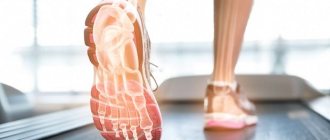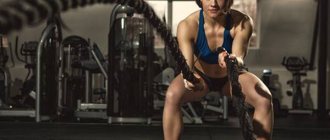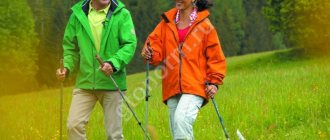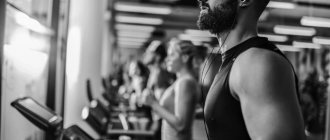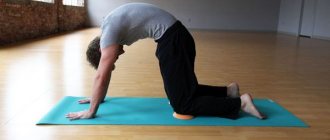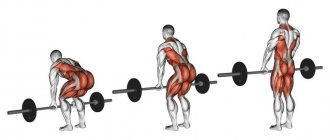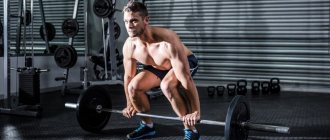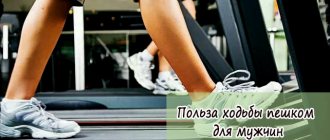Why is it useful?
The growing popularity of this sport can be explained by the fact that with Nordic walking with poles, the benefits and harms are incommensurable.
The undoubted advantages of Norwegian walking with poles are as follows:
- By using poles, the load on joints and knees is reduced, unlike running and race walking.
- Strengthens posture and the entire musculoskeletal system.
- Blood circulation improves, blood pressure and heartbeat are normalized.
- It helps to lose excess weight, in addition, for obese people, walking with poles is a way out, because with other sports activities the load on the joint apparatus will be destructive.
- An important aspect of its usefulness is the minimal effort available to everyone. You can study on your own or with a group at any time of the year, anywhere.
- When walking in this way, many muscles are involved in the process, which in ordinary life a person uses little or rarely. If you don’t do push-ups, don’t do pull-ups, don’t work out the area between the shoulder blades, then in the collar, interscapular area, blood stops supplying the muscles, and salts begin to be deposited, and during exercise, all deposits gradually “resolve.”
- Improves mood, helps get rid of depression. Vigorous arm swings help open the chest, allowing the person to “breathe” freely and easily. It was noticed long ago that a happy person walks with a flying gait, waving his arms, and waving his arms during exercise gives a feeling of freedom and confidence.
- During Nordic walking, as with swimming, 90% of all muscles work in the body.
- The heart rate during Nordic walking increases by 10-15%.
- Nordic walking is recommended after a stroke; it helps restore balance and coordination of movements. In ordinary life, right-handers and left-handers, as a rule, use only one hemisphere (left and right) - this manifests itself in an imperceptible imbalance, it becomes obvious during the first Nordic walking lessons, when the gait of beginners is characterized by impaired coordination, but with practice - that’s all is being restored.
Equipment
There are no instructions regarding clothing for Nordic walking with poles. There are some tips. Just like there is no technique for Nordic walking with poles.
If there is a walking club in your city, they will probably offer you special hats, sneakers, and pants.
In fact, you can buy clothes at any sports store. It is suitable for any hiking. You can wear regular comfortable clothes according to the season. Consider the degree of stress you want to give - if you move actively and sweat, you need to dress lighter than if you are going for a leisurely walk.
But with sticks it’s more difficult. How to choose them is described in detail in this article. Just remember that it is better to take Excel or Leki, Ergoforce. And the length is selected based on your height - multiply it in cm by 0.68 (for older people by 0.66) and round to a multiple of 5.
Indications
Almost everyone can do Nordic walking, but it will be an excellent way to improve the body’s health for the following diseases:
- For diseases of the neck, lower back, spine (osteochondrosis, etc.).
- For posture problems (scoliosis). In Finland, to combat teenage stoop, Nordic walking classes are included in the school curriculum in high school.
- For constant pain in the back and neck.
- If you have diseases of the lungs, upper respiratory tract (bronchial asthma).
- For certain cardiovascular disorders (coronary disease).
- If you have a difficult psychological health condition (depression), sleep is disturbed.
- For tremors (shaking) of the hands (Parkinson's disease).
- If you suffer from extra pounds.
Equipment
The only equipment is poles. Basically, the requirements apply only to clothing. So it should be:
- comfortable;
- preference for natural fabrics, since they have the ability to absorb moisture and allow air to pass through;
- waterproof (in rainy weather - a light windbreaker);
- warm (in the cold season, it is better to wear a T-shirt, sweater/sweatshirt first, and a windbreaker on top - this is more reliable protection from the cold than one thing, even the warmest and thickest).
As for shoes, there are minor requirements for them: flexibility and good grip of the sole. Sneakers with thick, springy soles and a high, hard heel are optimal.
For Nordic walking, only special poles made of carbon fiber, composite materials or aluminum are used. They should be light, but durable, able to withstand heavy loads. At the ends of the sticks there is a point made of hard alloy, the presence of which is due to the need for additional adhesion to a slippery surface. The rubber tip on the tip helps soften the shock when walking on paved areas.
The lanyard has a special purpose - a wide removable belt. It is attached to the poles using buttons, and is fixed on the wrists with an overlap so as not to disrupt blood circulation. The strap comes with the poles and is designed to hold them when moving backwards and grip them when moving forward (that is, the handle can be released and then easily grabbed and leaned on).
Contraindications
Walking with poles has the following motto: “at any age and with any body type, at any time of the year and in any place.” It follows from this that everyone has indications for Nordic walking, and there are no contraindications, but this is not entirely true.
Serious training is not recommended for children under 11 years of age.
In addition, Nordic walking is contraindicated when any physical activity is prohibited:
- After surgery, surgery during the recovery period.
- For inflammatory and infectious diseases.
- When blood clots form (thrombophlebitis).
- For severe diabetes mellitus that is not controlled by insulin.
- If a person is in an acute period after a recent stroke or heart attack.
- For severe heart rhythm disturbances.
- For sudden bleeding.
- For severe hypertension, which is characterized by uncontrolled attacks of pressure above 180/110 and resistance to medications.
- If myopia progresses rapidly, causing blindness, or glaucoma develops.
- If lung capacity decreases, which leads to severe failure.
As a rule, such people simply will not be able to come to Nordic walking classes, so if you are not prohibited from walking, then you are not prohibited from practicing this method.
In addition, it should be taken into account that in some cases Nordic walking classes in groups are prohibited, but individually with an instructor you can:
- During the recovery period after surgery on the leg joints.
- If during 3 months of classes, a person regularly fell.
- If a person has severely impaired coordination of movements (severe Parkinson's and other reasons).
- If arthrosis is observed in the hands at such a stage that it is impossible to hold the canes.
The most common contraindication for any sports activities is an acute infectious disease (cold, etc.).
Important! This sport is not prohibited for pregnant women; some practice it up to 40 weeks.
Do you need a warm-up?
Do we need to warm up before getting out of our chairs and walking to the kitchen? Now you have answered the question.
Of course, warm-up movements will never be superfluous. It is always useful to stretch your joints and stretch stiff muscles. Let's put it this way: let it not be a warm-up, but some kind of addition to Nordic walking in the form of exercises. Because standing in the middle of the forest and doing such “exercises” is very useful.
Without fail, this type of activity does not require any preliminary exercises. Of course, if you are planning to run with poles, then you really need to warm up, just like before sprinting.
In the case of a regular walk or workout for weight loss, it will be useful to vary the speed of your steps. It is best to start small, gradually accelerating to 5-7 km per hour or alternating intervals of fast and slow movements.
At first you need to walk slowly, slightly raising the poles with each step. We don’t make any special efforts to support ourselves. After 2-3 minutes we speed up and raise the poles higher. After 10 minutes, you can move your arms to full range. This will be the optimal warm-up.
It is better to do exercises in the middle of walking or after it. We took the sticks, put them together and did squats (a comfortable number of times), body turns, waved our legs, arms, you can even practice fencing (just don’t kill anyone, there are quite sharp metal teeth at the ends of the sticks).
Thus, warming up before Nordic walking is walking itself.
Select poles brief instructions
The success of your Nordic walking training greatly depends on the choice of poles; the main criteria for their correct selection are:
- Length or height - in this case, the market offers telescopic and monolithic poles. Telescopic ones have many connections, thanks to which you can select the length and adjust them; monolithic ones have a solid barrel. You should pay attention to telescopic poles only if you travel often and want to always have them with you. For constant, regular exercises, it is best to take monolithic sticks, as they are more reliable and stable than with a folding mechanism.
- What should be the height of the cane? When developing poles for Nordic walking, it was experimentally determined that their height for each person is calculated according to the formula: human height * 0.68, for athletic people the length can be taken a little longer than height * 0.7, for untrained overweight people, it is better to take There are fewer of them – height*0.66. If it is not possible to calculate the length, then you need to take the sticks in your hands so that a right angle is formed in the bend of the elbow, and they should not reach the floor by 2-3 cm.
- The bottom of the stick (tip) should be sharp and metal, but a special rubber tip is attached to it. If you walk on asphalt, concrete or other hard surfaces, then you will need to put it on, otherwise take it off.
- At the top of the handle there is a special glove (lanyard), which is adjusted to the size of the hand, they are designed for the left (Left) and right (Right) hands, it is fixed on the wrist, you must learn how to clamp it yourself so that it does not squeeze your hand and when the handle did not fall far down.
- The barrel of the stick had to be made of light, strong, elastic materials (carbon).
- As for whether it is possible to practice with ski poles, I must say that they differ significantly in length and tip, so you will be awkward and uncomfortable with them.
Recommendations for choosing poles
In order for the load to be distributed evenly, it is necessary to follow the walking technique and use poles of the required length. During training with poles that are unsuitable for this parameter, the joints and spine experience increased stress.
Formula for determining the length of sticks:
- walking pace is low (beginner, recovering person, “health” group) – height x0.66;
- average walking pace (fitness group) - height x0.68;
- walking pace is high (trained person, “sport” group) - height x0.7.
Values may be rounded by 1-2 cm in any direction. Sticks are divided into two types: fixed length and retractable telescopic (2-3 links), the latter are recommended to be chosen if the purchase will be made in an online store.
How to do Norwegian walking correctly
In order to know how to walk with poles correctly, you need to either take a couple of lessons from an instructor or read special information yourself or watch video tutorials.
In order to understand what its meaning is, you need to learn several stages - maintain coordination of movements, use sticks correctly, choose the appropriate walking rhythm.
The initial stage of Nordic walking will be normal walking with a “counterstep” technique, in which the left leg meets the right hand as you step, then the left hand meets the right leg. At this time, the sticks need to be taken by the middle and carried parallel to the ground, during a step the hands rise to the level of a handshake, they are straight, not bent, the amplitude of movements back and forth is the same.
You need to start at a slow pace, then gradually speed up, swinging your arms wider and wider.
The foot that takes a step should roll from heel to toes. Don't focus on the canes, move your arms freely with relaxed shoulders.
The main goal of this exercise is to achieve a natural walking pace with coordinated movements of the arms and legs.
The next exercise will be dragging sticks behind you: you need to lower the sticks with their tips to the ground and pull them behind you with relaxed hands. The lanyards must first be secured to the hands. You need to walk, forgetting about the sticks, placing them close to the body, using the “counterstep” technique, while the tips drag along the ground.
After 100 meters, check which leg you are moving forward with your left arm, if it is not your right leg, then leave the poles and try to achieve the correct “counterstep” technique.
The next step is to position the stick; you need to extend your hand with the stick to the level of a handshake, while the tip will rest against the back and you should feel that it is ready to push off.
Next, we learn to push off from the sticks, take a step with our right foot and bring our left hand with the stick forward, at the same time as the right heel touches the ground, the stick should be pushed into the surface. The stick is at the back. When taking the first step, you need to stop and check your posture, lean on a stick, change your center of gravity from your right to your left leg.
Then we take the next step and pay attention to the force of pressing the stick; the longer and more we press on the stick, the better for the muscles. At this point, the elbow should be extended in front of the body, as if you are preparing to shake hands. The movement should be not only in the elbow up and down, but also in the shoulder joint - forward, backward.
By observing all these movements, you begin to take the first steps in the Nordic walking technique, and you go further and further.
How often are classes held?
The work program should consist of 3-4 lessons per week, the duration of Nordic walking training is approximately 45 minutes -1 hour. In an hour, a good result would be a mileage of 6 km.
First rule
With the right approach to a Nordic walking lesson, it should include 3 stages:
- Warm up.
- Main part (Nordic walking).
- Closings or afterwords.
The main goal of any warm-up is:
- Warming up all muscle groups, starting with small ones, moving on to large ones, going beyond the usual movements.
- Preparing the heart through a gradual increase in heart rate, so that when moving to the next stage there is no sudden jump in heart rate.
Warm-up duration is approximately 5-15 minutes.
What activities does warm-up include?
- Regular walking, in which the poles need to be carried, holding them in the middle, parallel to the ground.
- Exercises with swing and rotational elements to develop the shoulder, knee and ankle joints.
- Stretching the muscles of the back, legs, shoulders.
Examples of warm-up exercises:
- Feet are shoulder-width apart, sticks in hands. You need to bend your knees a little to lean on the poles, and then roll from heel to toe, from toe to heel.
- Leaning on the sticks, swing your legs alternately.
- The stick must be placed on the back of the neck, grasped like a “barbell” with both hands and, without rotating the pelvis, make several tilts of the body to the right and left.
How should your hands work?
When Nordic walking, your arms should move in the same way as with a confident, free-moving gait.
The hands should always be at a small distance from the body, moving according to the “counterstep” principle described above - the left heel simultaneously lowers to the ground with the right tip.
It is important to understand that Nordic walking does not require unnatural arm movements; they should not be larger than the swings that a person makes when walking quickly, confidently, without poles.
The highest point of amplitude when bringing the hand forward is equal to the movement of the hand during a handshake. When moving back, the elbow joint straightens and the hand opens.
If the hand does not rise to a sufficient level and the push-off with the stick is weak, then the step is small and the pelvis moves little, on the contrary, the stronger the swings of the arms and push-off, the longer the step and the more the pelvis is involved. When the hand goes down, relaxation occurs in the hand and the cane is held with a lanyard
How to hold sticks
The basics for the correct use of Nordic walking poles are as follows:
- The handle of the stick should have the letters R or L on it, which means right and left stick.
- The hand must be threaded through the lanyard so that the thumb and index finger are located opposite the hole in the lanyard.
- Then secure the lanyard comfortably on your hand.
- Your thumb should rest on top of the lanyard fastener to make sure it doesn't fly open.
- In order to find out whether you have secured the poles correctly, stretch your hand forward so that your palm is open; if you feel good and your hand and the pole are in harmony, you feel that it is an “extension” of your hand, then you have done everything correctly. If there is a lot of free space between your hand and the lanyard, adjust it.
What should be your posture?
Those who regularly practice Nordic walking should know that posture is important to maintain good physical shape while walking.
Each person has his own individual characteristics, the ideality of posture is a rather subjective factor, but there are still certain recommendations on what the posture position should be during Nordic walking:
- The shoulders should not be tense, they should be in a relaxed state.
- The back remains in a straight position, taking into account the fact that the torso is slightly tilted forward (5-7 degrees).
- The tummy should not be relaxed, but taut, but at the same time you should breathe freely.
- Don't lower your head, look into the distance at the horizon or at least 10-15 meters ahead of you.
- There should be free rhythmic breathing that encourages you.
- Remember to roll your foot as it touches the ground all the way to your toes.
How do lessons end?
Nordic walking training ends with a relaxation phase. This is necessary in order to restore normal heart rhythm so that the body can return to normal, everyday functioning and prevent negative consequences in the form of muscle spasm by stretching them. You can add exercises to develop muscles and strengthen endurance.
Depending on how much time was spent on the main part of the workout and what exercises you will do, the duration of this phase is 5-30 minutes.
Elements of the relaxation phase:
- Gradually reduce the pace of walking; during the last 5 minutes, carry the poles in your hands, holding them in the middle.
- If you can, do a couple of strength exercises (squats, push-ups).
- Standing still, stretch your muscles.
- Relaxation exercises along with breathing restoration.
The elements in this phase are arranged in the reverse order relative to the initial phase of Nordic walking training.
If you are finishing the main part, you cannot stop abruptly. If you want, you can include exercises for flexibility, strength, and endurance.
Pay attention to the cervical spine, you need to perform a couple of stretching and flexibility exercises in this area, this improves blood flow in this area and improves the condition of patients with hypertension. But at the same time, you should not make sudden movements, strong turns of the head; the best thing is slow turns of the head to the right and left, tilts to the shoulders.
When performing breathing exercises, exhalation should be longer than inhalation - this contributes to greater relaxation of the body.
Benefit and harm
Among the main advantages:
- Maintain muscle tone in the upper and lower parts of the body at the same time;
- Significant calorie burning at relatively low training costs, low physical fitness;
- Low pressure on the knees and spine (damage to the musculoskeletal system increases with age);
- Posture correction;
- Improvement of general condition, impaired coordination of movements and balance (mainly during the rehabilitation period after vascular injuries);
- Increases endurance...
This sport is very good for health.
For young people
For young and middle-aged people, walking can correct various errors in the musculoskeletal system that were acquired during school years or are congenital (impaired posture, neck curvature), stabilize gait and improve coordination of movements.
A special feature is the early prevention of metabolic syndrome (obesity, type II diabetes mellitus, hypertension and even gout). In active young people, diseases of the gastrointestinal tract are less common.
For the elderly
With age, a significant proportion of diseases of the endocrine, cardiovascular and central nervous systems accumulate. Nordic walking, thanks to its simplicity, makes people feel in a new way: their desire and enthusiasm for life increase, their general condition improves and reliable prevention of various diseases is ensured.
This sport increases the use of glucose by cells in muscle and fat tissue, not only due to increased demand, but also by activating insulin receptors. This allows you to maintain an adequate glycemic background.
Active muscle contractions in fresh air increase total peripheral vascular resistance, heart rate and cardiac output. Against this background, the metabolic rate in the heart cells increases, and coronary blood flow accelerates.
Even in the presence of hypertension in stages II and III, the signs described above are not dangerous. As a result, it prevents coronary heart disease (reduces the frequency of angina attacks and heart attacks), as well as ischemic and hemorrhagic strokes.
With age, the frequency of atrophic and degenerative brain pathologies (Alzheimer's disease) increases. Prevention of these disorders through activation of mitochondria and increased ATP synthesis.
It is important! Scientific work notes a low incidence of breast, prostate and lung cancer (70% less) with constant training (from 5 times a week).
Damage can only occur if the Nordic walking technique is not followed or there are contraindications. In all other cases, this sport is completely safe. Major injuries include:
- Damage to joints and ligaments;
- Overload of individual muscle groups;
- Defective response from the cardiovascular system (development of arrhythmia, exacerbation of coronary heart disease, etc.);
- Respiratory failure (rapid breathing, cyanosis, dizziness, etc.).
Common mistakes
Errors during Nordic walking are not fatal, but they reduce its effectiveness, the most common of which are:
- Inactivity or little use of the upper shoulder girdle.
- Insufficient “throwing” of the stick back.
- The stick is thrown far forward, further than the legs.
- There is no need to artificially move the stick, it should drag along with your hand.
- The stick is clamped in the fist, all movement should be through the glove (lanyard).
- Insufficient emphasis on the sticks with your hands.
How to hold them?
There’s just no need to worry about this. The design of all high-quality models, without exception, includes a special loop that securely fixes the hand, and a lanyard with a special surface configuration, on which the fingers fit almost like a glove.
The length of the loop is easily adjusted with a clasp - and therefore there is no risk of damaging your wrist or losing the stick. All that remains is to learn not to strain your hands, and then the grip and pushing technique will be fixed at the subconscious level.
Benefits for weight loss
If you are overweight, running is prohibited due to the heavy load on the joints. In addition, running activities have many restrictions due to their safety. When running, it is possible to injure the spine, stretch muscles, and cause overstrain of the cardiovascular system. Therefore, the question of whether running or walking is better for losing weight should be decided depending on the doctor’s recommendations, your well-being and personal preferences.
It is important to note that Nordic walking helps only 30% of losing weight; the remaining 70% of weight loss depends on your diet. Regardless of how many kilocalories are burned during training, improper nutrition will quickly “replace” them.
The walking technique for losing weight is no different from the correct technique of regular Nordic walking. Interestingly, 30% more calories are burned in 1 hour during Nordic walking than during a regular walk.
Selection of devices
Since the main “assistant” in Finnish walking is sticks, for the effectiveness of training, their correct selection is as important as the technique of movements.
The first special devices were released in 1997.
Their length is an important selection parameter. It is selected individually. To choose the right poles that are comfortable to hold, simple calculations are carried out. The height of a beginning “athlete” is multiplied by a certain coefficient:
- 0.66 – during recreational activities;
- 0.68 – for fitness training;
- 0.7 – for “serious” sports activities.
Since all devices have standard sizes differing by 5 centimeters, the result obtained is checked against the table and the appropriate option is selected. If the number is in the interval between the presented size values, the choice is made based on the person’s physical fitness. For example, if he has just started “sports activity” or has limitations due to illness, choose a lower value. For a trained person, you can choose higher equipment, since in this case the load on the spine increases.
Note!
The best option for beginners are telescopic poles. Their size changes during training. In addition, 1 pair can be used by all family members.
When choosing devices, pay attention to the material from which they are made. Carbon is reliable, strong and expensive. Aluminum is lighter and cheaper. Any kit is not cheap, so you need to choose it responsibly.
Is Nordic walking possible for coxarthrosis?
Is it possible to do Nordic walking with arthrosis of the knee joint and other manifestations of arthrosis - this is a question that worries many. As a result of research in 2021, it was proven that the effect of Nordic walking for arthrosis is positive, and not negative, as previously thought.
About 100 people over 60 years of age with various forms of arthrosis of the hip and knee joints took part in the study and more than 90% of them noted:
- There was no significant pain during Nordic walking.
- There was a significant increase in the distance they were now able to travel.
The duration of the study was 3 months, during which these improvements progressed. But for those who stopped and returned to normal walking, all symptoms returned.
The average duration of the disease in this group was 11 years, during which they were no longer helped by medications, physiotherapy and other types of medical care. None of the participants dared to engage in Nordic walking, fearing deterioration, because medicine has virtually no research on the benefits of this method. There is currently talk that Nordic walking could become a definite treatment method for people with arthrosis.
How to walk correctly for maximum effect
To calculate the effectiveness of exercises, an indicator of the individual threshold of aerobic-anaerobic support (IATN) was introduced, but its measurement requires a complex study, so this procedure is expensive for ordinary people involved in Nordic walking. The solution is to simply measure the pulse rate, unless the person has any pathologies that prevent accurate heart rate measurement.
To measure the effectiveness of your Nordic walking session, you must:
- Measure your pulse in the morning while still in bed - a state of maximum rest.
- Measure at the heaviest load - the highest frequency; if this is not possible, it is calculated using the formula: 220 - human age (60, 70 years).
- A workout is considered effective and useful if the heart rate is from 55 to 75% of the heart rate at maximum load.
There are 3 levels of classes:
- Wellness – intended for those who have various diseases. The recommended heart rate is 55–65% of the maximum, the frequency of exercise is from 2 to 7 times a week.
- “Fitness” - this workout is for an ordinary person, the load on the pulse is 65–75% of the maximum, the frequency of exercise is about 2–6 times a week. High fitness level for people in good physical shape is recommended 1-2 times a week with a heart rate of 75-85% of maximum values.
- Sports level - for professional athletes in preparation for competitions, it is recommended to exercise 2 times a week with a heart rate load of more than 85% of maximum values.
